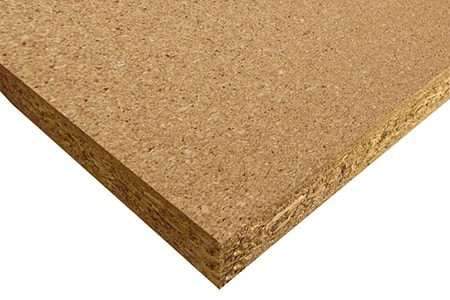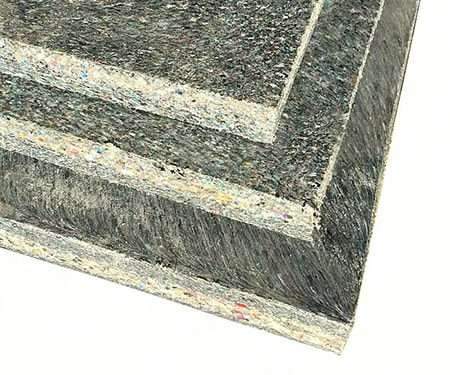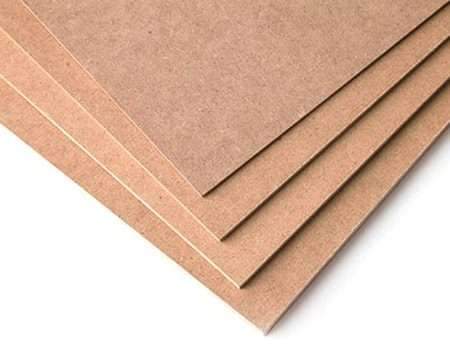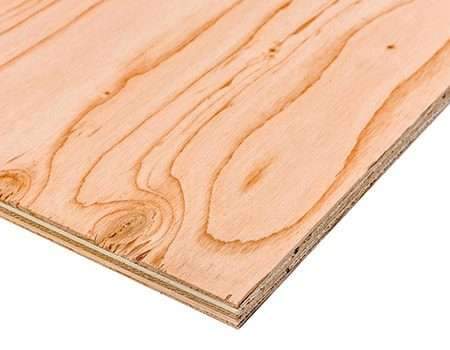Although there are better alternatives to plywood, plywood remains one of the most popular materials in construction and woodworking.
It is readily available, durable and of course economical.
It also has great customization capabilities, making it a versatile choice for both indoor and outdoor work.
In recent years, multiple alternatives to plywood have appeared on the market.
This is no doubt in response to the demand for a durable material that has better resistance to moisture damage,
does not harm the environment (or at least does it less), and fits smaller budgets.
But whatever your reasons for looking for alternatives to plywood,
we’re sure you’ll find something of interest here:
We’ve put together everything you need to know about the best alternatives to plywood.

Alternatives to plywood for your next project
If you are looking to get rid of plywood, you will be happy to know that there are at least 7 other materials to replace the different types of plywood out there.
Now, even though these aren’t exact alternatives, you’re bound to find something that matches your project:
Polyurethane panels
Polyurethane is a polymer, which means it is made of plastic, and may have a rough or smooth surface.
And this is the thing that gives polyurethane its biggest advantage over plywood.
Its physical properties ensure that it does not absorb moisture and is not susceptible to water damage.
For this reason, it is also easy to apply adhesives to polyurethane panels.
An advantage of polyurethane board that it shares with plywood is how light it is.
And if you can fork out a bit more for a glass fiber reinforced polyurethane board, you can expect even higher durability.
In fact, polyurethane reinforced with the right types of glass fibers is great for both structural and semi-structural applications.
The only drawback of polyurethane is its aesthetics, which really don’t compare to the wood finish characteristic of plywood.
Although these composite panels can have a decorative layer added to them.

medium density fibreboard (MDF)
If you have a long history of DIY experience, you will have heard of or even used MDF boards already.
Like plywood, MDF is an engineered wood product.
Instead of wood veneer, loose wood fibers are used.
These tiny wood fibers are bound together with chemicals, so there are no kinds of wood grain patterns.
The biggest advantage of using MDF panels is that they do not expand or contract when the weather changes,
making them more structurally sound.
If you are used to working with plywood, medium density fiberboard will be easier for you.
It responds well to adhesives and paints, is moisture resistant (both internal and external),
and can be customized in shape and size according to your needs.
Helping save the environment, medium density fiberboard is primarily a recycled material.
Plywood is superior to MDF in terms of durability, however,
you can keep some of your concerns about durability at bay if you can afford MDF in which a high quality wax or resin has been used.

Oriented Strand Board (OSB)
If both plywood and MDF sound great, but you can’t choose either, you should definitely consider OSB.
They are made by joining different sizes of scrap wood products,
which are treated with wax or resin before being oriented in a certain way (hence the name) to form solid boards.
Oriented Strand Board is available in many sizes, thicknesses and hardnesses.
It holds up to warping well, retains its strength, and boasts a level of water resistance not found in plywood.
Accordingly, it is suitable for a wide variety of projects.
And if you’re concerned about the environment, you’d be better off choosing OSB:
it’s usually made from wood slats from fast-growing trees – so it’s more sustainable.
Moreover, the OSB board takes no formaldehyde adhesive, wax or resin in its making.
Not to mention that OSB boards are much cheaper than plywood.

particle boards
The more affordable alternatives to plywood are undoubtedly particle board.
Particle board is made by densifying wood particles, and is also lighter than plywood and MDF.
Its smooth, glossy finish makes it a great flooring material,
and given that it’s available in a variety of thicknesses and densities, particle board is also very versatile.
It comes in standard size panels that can be cut according to your needs.
And like MDF, this material takes adhesives well.
In fact, it is common for builders to fortify tiles, linoleum or hardwood by gluing them to particle board.
And again, not only is it made from recycled materials, it also does not contain any formaldehyde (like OSB).
As such, this is another good alternative to plywood if you are environmentally conscious.
However, particle boards are not without their drawbacks.
First, you can’t expect a great deal of structural integrity from this material.
Secondly, its aesthetic value is low, and unfortunately, you often won’t be able to paint particle board without crippling its appearance.
You may also have difficulty using traditional woodworking tools on them.

EKO Ply
And since we’re all about eco-friendly plywood alternatives, it’s time to introduce you to EKO ply
(yes, even in the name), a board made from recycled materials.
This is a material made entirely from recycled materials, but that’s not why you should think about it.
EKO laminate is engineered for durability and strength that are significantly superior to plywood panels,
and is completely resistant to water damage, natural rot, and corrosion.
In addition, its exterior is resistant to chemicals, which greatly enhances its value for places like youth centers.
Aesthetically, EKO laminates are similar to recycled sheet products.
It has a gray patterned color with colorful flecks, and now while this doesn’t look very visually pleasing,
this also makes the EKO Coat a low or no maintenance material, as it is easy to clean.

High Density Fiberboard (HDF)
Another engineered wood material that is steadily gaining popularity is HDF, as you can imagine,
it is very similar to particle board and MDF.
However, it is also much stronger and denser in comparison,
the reason being that making HDF uses blasted wood fibers which are then compressed.
You’ve likely seen furniture made of hardboard, and this is probably the most common use.
It can also be used for construction purposes and works well as a temporary floor protector.
Furthermore, there is no use of glue or chemicals in the manufacture of rigid boards, instead,
the bonding process occurs with the help of lignin, a naturally occurring organic polymer.

solid wood
You might not have expected it, but we end our list of plywood alternatives with – you guessed it – real wood.
What we call “solid wood”, as you may already know, is wood that has been cut and milled directly from the trees.
As such, it is not subject to any additional processing.
The benefits of using this material are multiple.
First, the variety of naturally occurring wood species is great.
You can choose from a number of different types of wood to ensure the perfect match for your project – structurally,
economically, and of course, aesthetically (think of all the different wood grain patterns and colors you see in solid wood furniture).
For more architectural news


 العربية
العربية